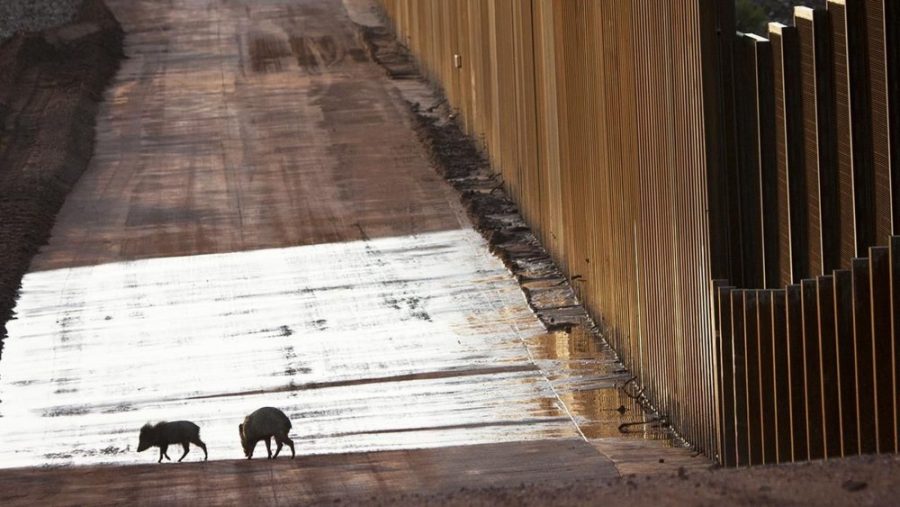If a wall is put up along the U.S.-Mexico border it would have extremely detrimental impacts on the migration patterns of animals.
There is already an 18-foot-tall steel fence that spans 650 miles from California to Texas, and 50 other miles of fencing along the border. The U.S.-Mexico border is 1,900 miles long, spanning California, Arizona, New Mexico and Texas.
Trump’s proposed wall would span 1,000 miles across the border, with the remainder being protected by natural obstacles.
Animals, however, do not recognize borders, and building a wall would undoubtedly affect animal migration and mating patterns.
Mountain ranges are referred to as sky islands because each mountain ecosystem represents a diverse “island” of life with vastly different ecosystems residing in the lowlands between the mountains.
The mountain range that spans across the American Southwest and northwestern Mexico is called the Madrean Sky Islands. This area is known for plant and animal biodiversity.
RELATED: Trump signs revised executive order limiting refugees, Middle East travel
There is fencing that spans across the Madrean Sky Islands, but Trump plans to build a wall that is much larger and more secure, making it even harder for animals to migrate.
The Madrean Sky Islands are comprised of 57 mountains that are littered with pine and oak trees and 7,000 different species of plants and animals. The spaces between the mountains are made up of desert or grasslands that isolate the Madrean Sky Island ecosystem.
To put the biodiversity of the Madrean Sky Islands into perspective, on the United States side of the Madrean Sky Islands, most of the land is a part of the Coronado National Forest. The Coronado National Forest is the most ecologically diverse national forest in the U.S, as well as being the national forest with the most threatened and endangered animals.
Large land mammals in the Madrean Sky Islands, like pumas and bears, travel across the different mountain ranges. It would be much more difficult for these animals to exchange genetic material with the wall in place, making their species more susceptible to disease over time.
The wall would not only have an impact on Arizona; it would also have major environmental impacts on the Texas border region. Like the Madrean Sky Islands, the Rio Grande Valley is extremely bio-diverse, with more than 700 vertebrate species and 500 bird species.
RELATED: UA LGBTQ community reacts to Trump rescinding trans bathroom guidelines
There are three different national wildlife refuges in the Rio Grande River Valley: the Lower Rio Grande Valley, Laguna Atascosa and Santa Ana. 70 percent of these wildlife refuges would be affected by the wall.
With a wall blocking the animals’ trails across the U.S.-Mexico border, they would not be able to continue with their migration and mating patterns. By reducing the animals’ mobility, it decreases their mating options, which results in a lack of biodiversity, which can lead to disease or even extinction.
The construction and placement of a wall would also damage animal habitats. The wall would have extremely negative impacts on the environment and biodiversity of the southern United States and Northern Mexico.
The concept of a wall to prevent the entrance of illegal immigrants from entering the U.S. is theoretical at best because if people are motivated enough to make it here, they will find their way around a wall.
Animals do not have these same luxuries. The only thing the wall may do is prevent the migration of animals, which would decrease biodiversity in the United states.
Follow Claudia Drace on Twitter









